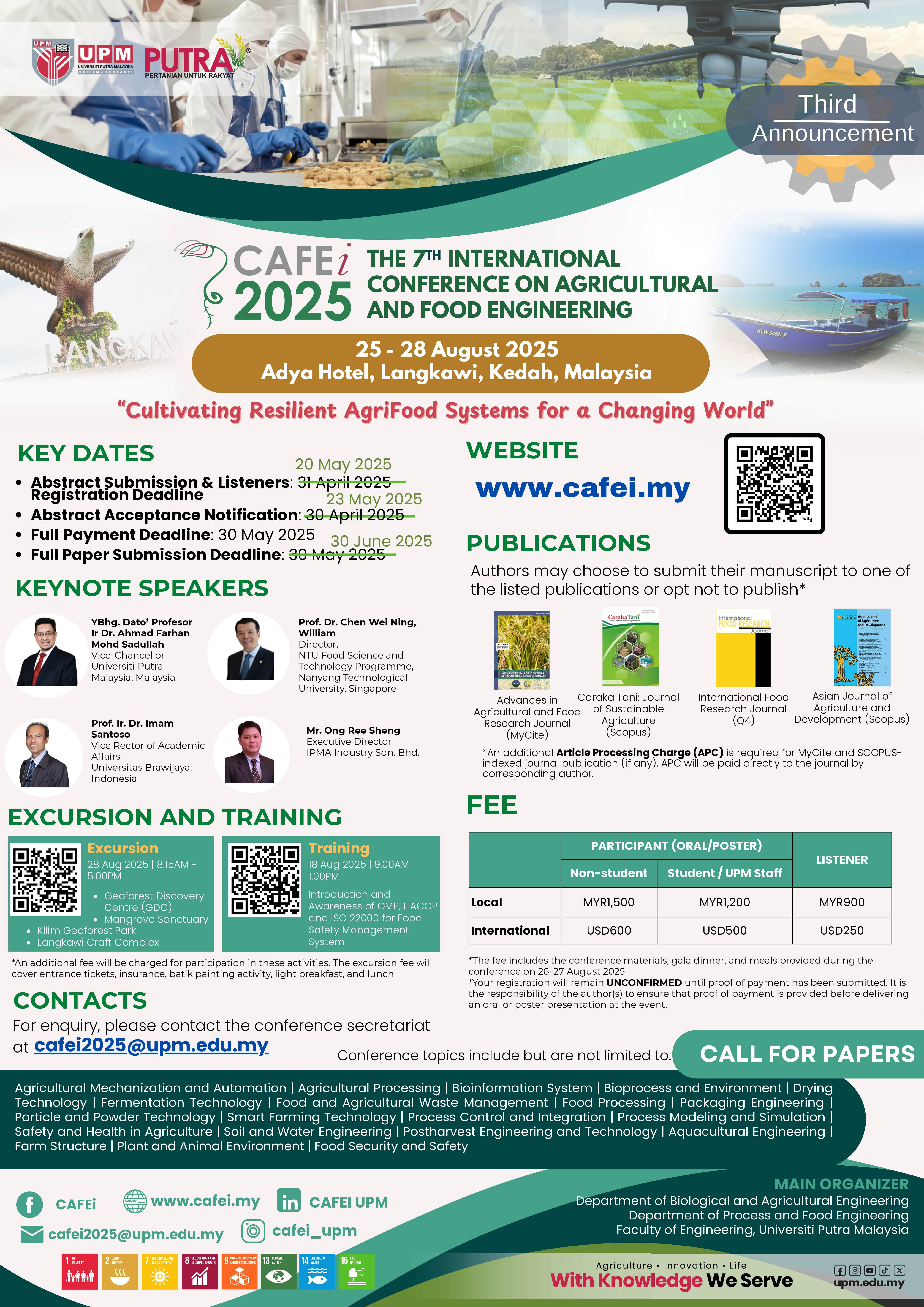Preliminary Evaluation of Drip Irrigation System Performance in Watermelon Cultivation
DOI:
https://doi.org/10.36877/aafrj.a0000319Abstract
In watermelon production, irrigation is the most significant factor in achieving good yields. Properly selecting an irrigation system may provide successful irrigation for excellent crop quality and productivity. Drip irrigation is a popular approach for this purpose. Drip irrigation can successfully deliver water to plants based on the amount required by the crop. However, this irrigation system's performance should be investigated to guarantee that it can run in the best possible conditions. This study aimed to assess the preliminary version of drip irrigation for watermelon crops. The field experiments were conducted on a watermelon planting plot at MARDI Kundang Selangor. The drip irrigation system performance was evaluated based on hydraulic parameters such as coefficient uniformity (CU), emission uniformity (EU), coefficient of variation (CV), and emitter flow variation (EFV) according to ASAE standards. The results indicate that CU is in excellent classification, with a CU efficiency greater than 91 per cent. The EU value was 86%, showing a reasonable variety. However, the CV value was 0.1, indicating a marginal classification. Meanwhile, the emitter flow variation (EFV) is 19% which is considered acceptable. The results of this preliminary study showed that the performance of this drip irrigation system is satisfactory, as the hydraulic parameters evaluated met the ASAE standard's minimum classification requirements. The distribution of discharge data was similarly shown to have no significant difference using a one-sample t-test, with a p-value of 0.096.
Downloads
Published
How to Cite
Issue
Section
License
Copyright (c) 2024 Eddy Herman Sharu, Rohazrin Abdul Rani, Anuar Abdullah, Mohamad Fakhrul Zaman Omar

This work is licensed under a Creative Commons Attribution-NonCommercial 4.0 International License.
Author(s) shall retain the copyright of their work and grant the Journal/Publisher right for the first publication with the work simultaneously licensed under:
Creative Commons Attribution-NonCommercial 4.0 International (CC BY-NC 4.0). This license allows for the copying, distribution and transmission of the work, provided the correct attribution of the original creator is stated. Adaptation and remixing are also permitted.

This broad license intends to facilitate free access to, as well as the unrestricted reuse of, original works of all types for non-commercial purposes.
The author(s) permits HH Publisher to publish this article that has not been submitted elsewhere.

.png)

.jpg)



